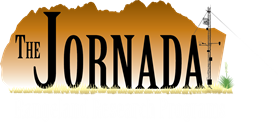| Abstract | Salt Cedar (Tamarix spp.) has invaded riparian areas throughout the Western United States and has been reported to increase evapotranspiration, increase fire frequency, reduce habitat values, and replace native plant species. Herbicides and mechanical clearing are the main methods used to remove salt cedar. Goats readily browsed salt cedar, Russian olive and undesirable weeds in experimental plots along the Rio Grande, while maintaining weight and health. Nearly every salt cedar plant was damaged by browsing, but goats had an especially severe impact on resprouts, removing about half of the above ground vegetation. Goats had much less impact on large dense salt cedar, but cleared out the understory, reducing laddering fuels, improving access for recreation and reducing costs for subsequent mechanical or manual clearing. After two years of goat treatment, the width of salt cedars was reduced by about 35%, but only about 4% of the large salt cedars were killed. It may take several more years of goat browsing to deplete the root reserves of salt cedar sufficiently to increase tree mortality. Grass cover, especially native grama grasses (Bouteloua barbatus and B. aristoides), increased from less than 1% before goat browsing to about 20% after goat browsing. |


